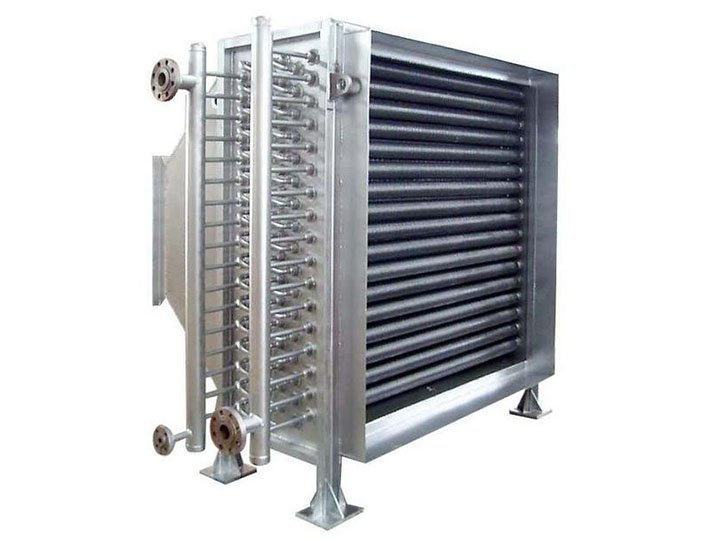Daily maintenance of finned tubes
Why Finned Tube Maintenance is Critical for Heat Exchanger Performance
Proper maintenance of finned tubes can extend equipment lifespan by up to 60% and improve heat transfer efficiency by 25-40%. This comprehensive guide provides technical experts with data-driven insights and practical maintenance strategies.
Daily maintenance of finned tubes is not just a routine task - its a strategic investment in operational efficiency. Appropriate maintenance methods will have a multiplier effect on the later use of finned tubes. Regular maintenance can reduce the cost and time of replacing finned tubes by up to 75% while maintaining optimal thermal performance.

Plate fin heat exchanger - Proper maintenance ensures optimal performance
Comprehensive Finned Tube Maintenance Procedures
Essential Maintenance Checklist
1. Regular Inspection Protocol
Regularly check whether each finned tube is complete, whether there are deposits, coking, water rust and other scales attached, and clean them immediately. At the same time, it is also necessary to check whether the adhesion between each finned tube and the rubber gasket is tight, and whether the rubber gasket itself is intact, so as to avoid leakage caused by debonding and damage of the rubber gasket.
2. Lubrication Best Practices
The compression nuts and upper and lower guide rods of the plate heat exchanger should be lubricated frequently with high-temperature lubricating grease specifically designed for thermal applications.
3. Specialized Personnel Requirements
Each instrument adjustment should be handled by a dedicated person with proper certification, and the operation and maintenance procedures should be strictly followed according to ASME and ISO standards.
Technical Data & Performance Metrics
Finned Tube Maintenance Schedule
| Maintenance Activity | Frequency | Tools Required | Expected Time | Performance Impact |
|---|---|---|---|---|
| Visual Inspection | Weekly | Inspection mirror, flashlight | 15-30 minutes | Prevents major failures |
| Surface Cleaning | Monthly | Soft brushes, approved solvents | 1-2 hours | Maintains 95% efficiency |
| Gasket Inspection | Quarterly | Torque wrench, gasket kit | 2-3 hours | Prevents leakage issues |
| Comprehensive Overhaul | Annually | Full maintenance kit | 4-8 hours | Restores to like-new condition |
Gasket Replacement Technical Procedure
When the rubber gasket needs to be replaced or the degummed part needs to be repaired, the fin tube needs to be removed and placed on the table, the old gasket needs to be removed, or the glue traces in the groove of the fin tube at the degummed part need to be rubbed with fine sandpaper, and then the oil traces in the groove need to be wiped off with solvents such as carbon tetrachloride or trichloroethylene, and then the back of the new rubber gasket needs to be rubbed with fine sandpaper, and the oil traces need to be wiped off with carbon tetrachloride or trichloroethylene solvents. Then apply a thin layer of glue on the groove and the back of the rubber gasket, wait for it to dry slightly, so that it does not stick to the fingers, but is still sticky. The rubber gasket is embedded in the groove, flattened around, and a layer of talcum powder is applied. Then the fin tube is installed on the equipment frame and gently clamped. It can be put into production and use at intervals according to the glue instructions.
Proper vs Improper Maintenance Comparison
Proper Maintenance Practices
• Regular inspection schedules maintained
• Use of manufacturer-approved materials
• Proper torque application during assembly
• Documentation of all maintenance activities
• Trained personnel performing work
Common Maintenance Mistakes
• Over-tightening compression nuts
• Using incompatible cleaning chemicals
• Ignoring small leaks or deposits
• Lack of proper documentation
• Untrained personnel performing critical tasks
4. Torque Management
Each time you re-tighten the fin tube, pay attention to the scale position of the last tightening, and do not over-press the rubber gasket, which will reduce the service life of the gasket. Use a calibrated torque wrench to ensure proper compression.
5. Gap Management
When replacing the fin tube rubber gasket, you must update this section to avoid uneven gaps between the pieces, which will affect the heat transfer effect. Uneven gaps can reduce thermal efficiency by up to 25%.
Performance Impact Data
Studies show that properly maintained finned tubes operate at 92-97% efficiency, while neglected systems can drop to 65-75% efficiency, resulting in significant energy waste and increased operational costs.
Takeaways for Optimal Finned Tube Maintenance
Effective maintenance of finned tubes requires a systematic approach combining regular inspections, proper cleaning techniques, and adherence to manufacturer specifications. Implementing the strategies outlined in this guide can significantly extend equipment lifespan, improve thermal efficiency, and reduce operational costs. Remember that preventive maintenance is always more cost-effective than reactive repairs.

